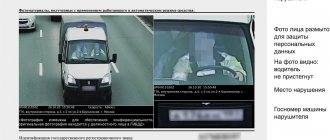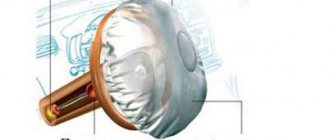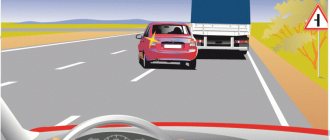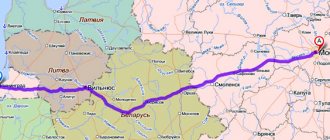Seat belts belong to the passive safety system of a car, and are also designed to reduce the likelihood of injury to the driver and passengers in an emergency. They can be conditionally divided into two groups - according to the type of fastening and the triggering system.
The fastening is:
- point-to-point;
- three-point;
- four-point or more (used mainly in sports cars).
Operating principles:
- static (not currently used);
- dynamic (most common);
- proactive.
The history of belts
The massive distribution of seat belts occurred in the 50s of the last century. This was due to the fact that at ever increasing speeds, accidents began to lead to quite serious injuries and often deaths.
Gustav Lebe, a French scientist, proposed installing five-point seat belts on cars back in 1903. But at that time his idea did not meet with much enthusiasm, and as a result, did not take root. During the research for the best design, more than a dozen devices were invented, but none of them, for a number of reasons, took root. Some are due to the complexity of the design and fastenings, others due to insufficient reliability.
Take, for example, the same two-point seat belts. Fixing the passenger or driver at waist level, in the event of a collision, they did not save them from hitting the dashboard, steering wheel or windshield. After all, the upper body was not fixed at all. Some GAZelle car models still have a similar mount (front seat next to the driver).
The pioneer, whose invention not only caught on, but also became widespread, and later became the progenitor of all modern three-point seat belts, was Nils Bohlin. An engineer from Sweden, who worked on ejection safety systems for an airline, came to Volvo and proposed a three-point system.
Article on the topic: What to do if the lock in your car freezes?
Types and their features
In this case, the difference between different types comes down only to the number of attachment points. But injury safety depends quite strongly on this parameter.
In general, seat belts are divided into:
- two-;
- three-;
- four-;
- five-;
- six-point.
Note that in addition to the safety of belts, the ease of use is also taken into account, so a greater number of points is not always the best option.
Two-point belts
Two-point is the first option that began to be widely used on cars. But this type is the least effective in terms of security.
On vehicles, two variations were used - waist and chest. In the first case, the belt ran transversely across the seat in the waist area. One of the attachment points was located near the threshold or below on the side pillar, while the second was installed between the seats on the central tunnel, and it included a lock. This option is bad because the strap only held the lower part of the body, and in the event of an impact, the upper part was strongly pushed forward due to inertia, that is, injuries from impacts on the front panel and steering wheel were guaranteed.
The chest version of the two-point belt ran diagonally across the chest. This arrangement of the strap was ensured by the upper location of the attachment point on the side post. The mounting point with the lock remained in the same place - between the seats. In this version, the upper part of the body was held in place during an accident, but due to the lack of lower fixation, there was a possibility of the body “diving” under the belt, which again caused serious injuries.
Three point type
Seat belts with three attachment points are one of the most optimal options for use, since they provide proper support for the body and are quite comfortable to use.
The strap is fixed in this type at three points - upper and lower on the side post and with a lock - on the central tunnel. One of the points on the stand is the end point for the strap (the end is attached to it), while the second is equipped with a reel for winding up the belt. As for the tongue that secures the belt in the lock, it is movable and can move along the strap.
After pulling the strap and fixing it in the lock, one part of it is located diagonally and runs along the chest, and the second - transversely in the lumbar area. That is, the three-point type combines both options of the two-point version at the same time.
This arrangement of the tape provides support for the upper body and eliminates the possibility of “diving.” It is also convenient to use, since for installation you just need to pull the belt and fix it at only one point - with a lock.
Four point design
Four-point seat belts are mostly used on sports cars. They did not become widespread on mass models due to the inconvenience of use.
It is noteworthy that the attachment points in this option may be different. One of the options is two vertical straps with a static permanent fastening and one detachable one in the lumbar area. The peculiarity of this version is that the vertical belts are not attached to the body elements, but directly to the seat.
The inconvenience of landing lies in the fact that you first need to throw vertical straps over your shoulders (like putting on a backpack), and then stretch and secure the lumbar belt.
The second option differs in that the vertical straps are not static and can be detached. But for this purpose, there are locking tabs at their ends and they are installed on a special additional lock located on the lumbar belt.
Five- and six-point types
The five-point version is also used on sports cars. Additionally, it has found application in children's car seats. Essentially, this is the same four-point belt, but it has one more strap. It stretches from the bottom of the seat, fits between the legs and is fixed in the lock, which is used to fasten the vertical belts. This option provides secure body support and improved load distribution across the belt.
The difference between the six-point type is that it has not one, but two belts at the bottom of the seat. Fixation of the body in five- and six-point types of seat belts is very reliable, which reduces the likelihood of injury. But at the same time, they are very inconvenient, since the passenger first has to stretch the lumbar strap, then fix the vertical ones, and then also fix one or two lower ones. Therefore, these types of belts are not used on mass-produced models.
Three point static seat belt
The design of this design was simple. Diagonal and waist strap with a lock that was fixed at the hip. The fastening is the same as in a modern car, with the only difference being that the fixation system was static. A significant drawback of this system is the need for adjustment. Having sat down and buckled up, the passenger had to adjust the fastening so that no more than two fingers could fit under the strap. If the length was greater, safety was again at risk. In the event of a collision, the body managed to gain acceleration before it encountered an obstacle in the form of a seat belt.
How does a seat belt work?
The job of seat belts is to clearly hold the passenger’s body in a constant place (in the seat). During an accident, the passenger's body will move forward according to the inertia of movement, and in a rollover collision, the body of an unbelted passenger can also cause damage to other participants in the vehicle.
In addition, holding the passenger in a static position makes it more likely that the airbags will properly and timely restrain that passenger, which significantly increases their level of impact in preserving the life of the passenger. The seat belts themselves are created using stretchable fiber, which absorbs additional kinetics due to the counteraction of two bodies. When considering the seat belt system, one should not forget about the so-called energy-absorbing device, presented in the form of shock absorbers and extensions.
The fixation of the strap to the body should not be disturbed by possible objects, bags, packages. Holding children or pets in your arms can also cause injury to them and to you.
Evolution of the belt
Inertial three-point seat belts, which replaced static ones in the 70s, were a breakthrough in the field of safety. They not only corrected the statistics of deaths and injuries in road accidents, but also almost doubled the number of people wearing seat belts. After all, there is no longer a need to adjust the belt when getting into the car. I sat down, buckled up, and the inertial reel itself took away the excess.
The design is such that in the event of an accident, the ball or pendulum mechanism of the reel fixes the tape and prevents it from unwinding, thereby securely holding the body. The inertial belt reel device blocks the belt when the car rolls over, in the event of a roll or skid, as well as during sudden braking. It would seem that three-point seat belts are ideal in terms of safety, but like any other, they have a significant drawback.
This is a delay in response, and in an accident, when the count is a fraction of a second, this delay can be dangerous. In winter, when a person is dressed in a large amount of clothing, the device creates that dangerous space between the belt and the body, as a result of which the body manages to gain serious speed. Therefore, the next stages in development were systems that operate proactively.
Article on the topic: Popular types of passenger car bodies
Function and operation scheme
A squib with a pretensioner appeared when airbags came into use. However, some car models coming off the assembly line in recent years still do not have it. To understand why it is needed, it is enough to clearly understand what happens if the car makes an unexpected sharp maneuver or gets into an accident. In case of an accident, it brakes sharply, and when jerking, it moves forward or sideways. The person sitting in the chair moves along with the machine; it is only relative to the chair itself that he is motionless. And when an unforeseen situation occurs, by inertia the body continues to move in the same direction. The result is a bruised or even broken spine.
A belt with a pretensioner, fired during an incident, seems to hold the body in the same position, but at the same time weakens the belt, preventing it from compressing the body too much.
At the same time, the headrest and air cushion envelop the head and neck, preventing them from hitting. For an unbelted person, if the car was going at high speed, this airbag would do more harm than help - after all, the face collides not with an ejected airbag, but with a shooting airbag! The risk of breaking the spine increases several times.
That is why we can talk about safety only if the car has an airbag and the occupant is secured with a belt with a pretensioner.
Belt pretensioners
The first in this area were squibs, which, receiving a signal from the control system, when triggered, tightened the seat belt, the length decreased, reducing that same dangerous distance. To prevent the tension from being critically strong, the tensioner design contained a force limiter, a device that, when the load on the chest was exceeded (approximately 150 kg), began to give slack, thereby weakening the belt’s dead grip. The only drawback of these devices was and remains their disposability. After activation, the squib must be replaced.
The system of electric tensioners is completely free of this drawback. They are able to perform this action repeatedly. Working in conjunction with radars and sensors, they are able to determine critical proximity even before the moment of collision, which means protecting passengers and the driver in advance. If the device detects a danger, the length of the belt is shortened and the person is securely fixed in the chair.
Other types of belts
There are also four-point and five-point harnesses. These are sports seat belts and are used to securely secure racing drivers. The first has four fastening points, and the second, respectively, five. The five-point seat belt is also used in child car seats that have recently become mandatory. This mount most reliably fixes the body and distributes the load on it.
Another variety has appeared called inflatable seat belts that fill with gas during an accident. The fastening of such belts is mainly three-point.
What conclusion can be drawn from all of the above? Many minds are concerned about the safety of the driver and passengers, many people are working to improve safety systems designed to save our lives and health. It's up to you to decide whether you should neglect this, but when getting into the car, remember that everything possible has been done for your safety; all you need to do is buckle up.
Share with friends on social networks:
Telegram
Causes
Special knife used for cutting seat belts
If your vehicle's security system won't retract, or the lock is stuck and cannot be disengaged, there could be several reasons for this. Before we move on to how to disassemble and disconnect a belt that does not work and does not retract, let's talk about the reasons. There are not many of them, so we will not dwell on this point for long. After all, in order to repair the latch of an unfastened strap, you need to know what is not working and why. So, the reasons:
- First of all, the belt usually does not retract due to wear. Or rather, not specifically the wear of the belt, but in principle the locking system. Also, this may not be related to the entire system, but to one of its components. If the buckle of an unfastened strap is jammed, does not retract, and you cannot disengage it, then, without a doubt, the problem is in the mechanism. But if the element was not fastened, that’s half the trouble. It will be much worse if it jams during operation.
- The second reason is the breakdown of one or another component. As a rule, it concerns not an unfastened belt, but a fastened one. If a breakdown occurs or a defect appears in the operation of one of the components, this is usually associated directly with the fastened structural elements of the system. In this case, only repairs will help you and nothing more. Or, of course, you can always replace failed parts.
- Another reason is blocking after an accident. Typically, the design of the strap is made in such a way that in the event of a traffic accident, the squibs of the mechanism are activated. In this case, the lock of the device jams and it is no longer possible to disable it.
Depending on the car model, the driver may receive a signal that the straps are stuck. This signal can be either audible or appear on the instrument panel. The signal may also appear on the on-board computer screen, if available. In any case, if the car is equipped with “brains”, the driver will receive a corresponding signal.
One more point regarding signals. The driver's warning may look different. The signal may be in the form of a loud click, which is not typical for a security system. The motorist will hear this signal even when driving with loud music. As you understand, such a signal also indicates that the belt needs to be cleaned.










